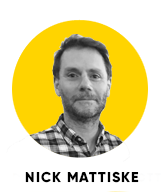Review: Chernobyl Roulette: A War Story, Serhii Plokhy, Allen Lane/Penguin
With talk recently in Australia of the suitability of nuclear power generation, we would do well to remember Chernobyl – and not just the 1986 disaster, but the fact that nuclear power plants are a nightmare for war scenarios, possible targets for sabotage or collateral damage leading to meltdowns. Two years ago, these were exactly the dangers as Russia made a foolhardy takeover of the Chernobyl plant during the start of their Ukraine invasion.
Serhii Plokhy is well-placed to write about the Chernobyl takeover, being a Ukrainian historian of nuclear disasters (including a best-selling book about 1986) and eastern Europe. Here he describes how the Russians, knowing the Chernobyl area was less fortified, used the exclusion zone as a route for what they thought would be an easy capture of Kyiv, the Ukrainian capital.
As troops massed at Ukraine’s borders in January 2022 there was debate within Ukraine about whether the plant was worth defending. President Zelensky seemed in denial that Putin would attack: why would he bother risking a nuclear accident?
But in February Russians soldiers moved through Belarus into the Chernobyl zone, churning up radioactive dust as they travelled in their armoured vehicles. Arriving at the plant, they told the Ukrainians guarding the plant that they would damage it unless the Ukrainians surrendered, which they duly did to avoid potential disaster. The workers at the plant became hostages and a night shift became a month-long shift to ensure the plant kept running safely.

The nuclear reactors were not running by 2000, but there are still decades of work to clean highly radioactive material, on top of general maintenance of the sarcophagus which covers the reactor that exploded in 1986, underneath which reactions are still taking place. It is still a dangerous place, used to their advantage by the Ukrainian operators and their leader, Valentyn Heiko, who quickly told the fearful Russian generals that they had better stick by Heiko’s rules or risk killing themselves. The Ukrainians heroically worked to exhaustion, running the plant and offering what resistance to Russian belligerence they could in the tense circumstances.
This was not only at Chernobyl: in the nearby town of Slavutych, residents staged mass protests in the face of their occupiers. At one point an Orthodox priest ran through the crowd to confront shocked Russian troops who protested that they too were Orthodox Christians. The priest shouted at them that Christians do not point machine guns at civilians.
The Russians, for their part, had made up stories to justify the takeover, alleging that the Ukrainians were manufacturing nuclear weapons there. They made a pretence of searching for weapons, naturally turning up nothing. They, including Putin, then suggested that the plant was captured to avoid the Ukrainians themselves sabotaging it. Heiko indeed used this as a threat to the Russian commanders, though it was bluff. He knew the Russians were ignorant about just how dangerous the plant was or wasn’t, and were scared of a disaster that would inevitably affect Russia as well.
Plokhy suggests that the Russian military leaders were mostly intelligent, reasonable people who were unsure of how exactly to carry out orders from above. Some of the soldiers were reluctant conscripts, but there was a large contingent of brainwashed soldiers who thought they were liberating the Ukrainians. The Ukrainians noticed soldiers reading Orwell’s 1984, but, said the Ukrainians, they missed the irony and didn’t take it seriously. As the Russians began suffering heavy losses in the war, the propaganda tailed off, and they simply said they were following orders. Many of the soldiers were from impoverished parts of wider Russia and engaged in mass looting.
The Ukrainians also described the idiocy of the Russians, who filled sandbags with highly radioactive soil from the so-called Red Forest around the plant to build fortifications. A frequent question from the plant operators to the befuddled Russians was, ‘are you in your right mind?’ There is argument over the levels of radiation poisoning soldiers may have suffered, something that may only become clearer in decades, although with Russian propaganda such as it is, we may never know.

With the failure of the Russian assault on Kyiv, the Russians retreated from the Chernobyl plant at the end of March 2022. Further south, the Russians had also captured the Zaporizhia nuclear plant, the largest in Europe, recklessly shelling it in the takeover. The plant remains in Russian control. (There are also now questions about whether the Russians have been sabotaging it.) The destruction of the nearby Kakhovka Dam has not overly affected the plant but is an indication of Putin’s intention to inflict environmental catastrophe if it suits him. Add to this his recent, increased nuclear sabre-rattling, and it doesn’t seem like there is any guaranteed safety for the nuclear facilities of Chernobyl and Zaporizhia, located in the cauldron of war.
Nick Mattiske blogs on books at coburgreviewofbooks.wordpress.com and is the illustrator of Thoughts That Feel So Big.
Photo by Wendelin Jacober from Pexels.com












